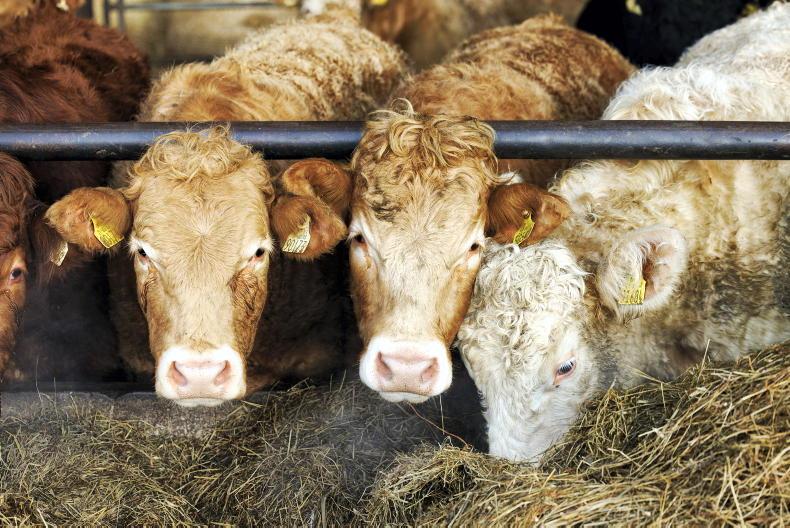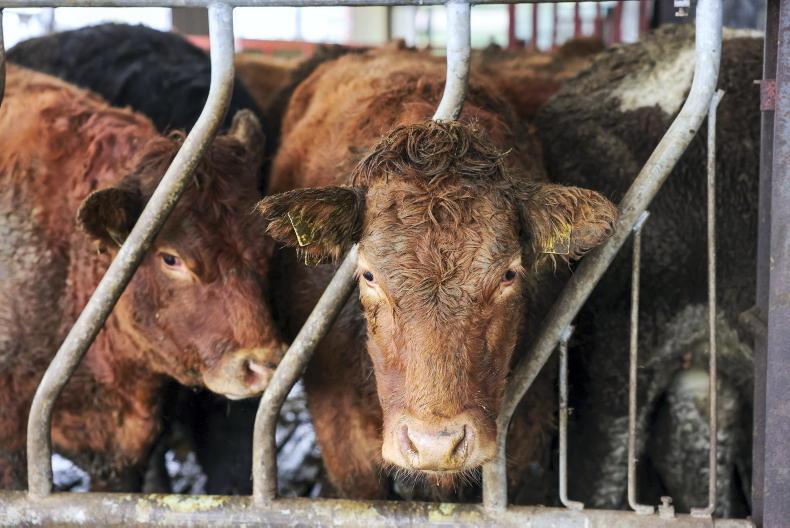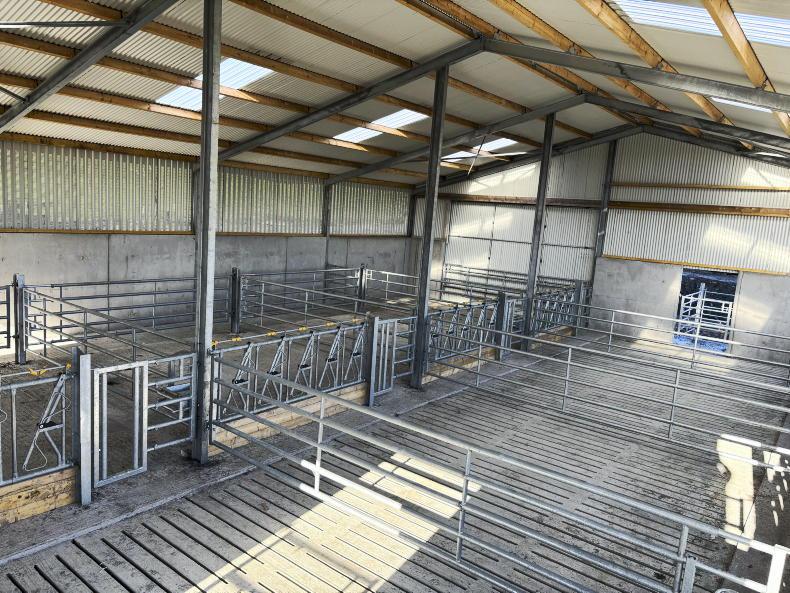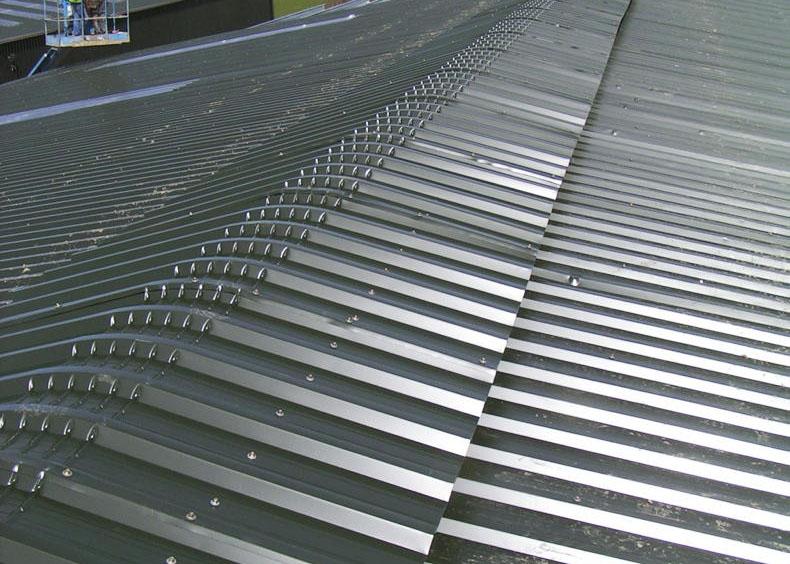Over the last two weeks, sheds across the country have started to be filled for winter, with many farmers forced into housing due to poor weather conditions.
All winter accommodation lends itself to lice and mites spreading from animal to animal due to the close proximity of stock, the long-haired coats seen in stock coming into the winter period and the fact that there is little direct sunlight on animals when in the shed.
Add to that the fact the weather is mild and damp and that many cattle were housed when wet, it provides the perfect environment for lice and mites to thrive, so infestations this year are likely to be quite high.
Issues with lice and mites can be identified by seeing cattle licking excessively as well as scratching on gates, feed barriers and posts. However, lice and mites can be present in stock that are not showing clinical signs.
Types of lice
There are two types of lice, sucking and biting. The best method of treatment is determined by the type present in your shed.
Unfortunately, there is no simple way of distinguishing between the two types.
It requires your vet to take a skin scrape from an infected animal and examine it under a microscope.
The two types of product that are designed to treat lice and mites are synthetic pyrethroids, which are a pour-on- or spot-on-type product, and the clear drenches or Ivermectin-based products, also available as a pour-on or as an injectable.
Injectables are not as good at treating biting lice and so a pour-on product is better where they are an issue.
When dealing with pour-on or spot-on type products, it is important to apply them as directed on the label as spot-on products require the entire dosage to be placed on to the skin in one area of the animal while pour-ons need to be applied evenly along the spine of the animal.
Delivering the correct amount of product is also important, so knowing the weight of the animal being treated is critical.
For stock that are due to be slaughtered in the coming weeks and months, make sure you are aware of the withdrawal period of the product being used.
Clipping cattle pre-treatment is always a good idea as it means the product is delivered directly on to the skin of the animal, as well as the fact that it removes some coverage for the lice and mites to live in.
When treating animals, always wear gloves as pour-on products are absorbed through the skin.
In recent years, there have been increased reports of farmers having to go back in to treat animals a second and even a third time throughout the entire winter.
While some of this may be down to the incorrect type of product being used for the lice infestation (biting v sucking), in reality it is likely down to the milder winters being experienced which fail to kill off lice populations in sheds.
Other factors which can lead to poor results from treatment include:
Treating too soon after housing: it takes between three and four weeks for eggs to hatch and treating earlier than this will not kill eggs. Mixing cattle/air space: lice and mites can easily move from animal to animal and within shared airspaces so all animals in the shed need to be treated at the same time, even if they are not showing signs of infestation.Once stock are treated, no other animals should be added to the group as even one untreated animal would be enough to re-infect the shed.
Over the last two weeks, sheds across the country have started to be filled for winter, with many farmers forced into housing due to poor weather conditions.
All winter accommodation lends itself to lice and mites spreading from animal to animal due to the close proximity of stock, the long-haired coats seen in stock coming into the winter period and the fact that there is little direct sunlight on animals when in the shed.
Add to that the fact the weather is mild and damp and that many cattle were housed when wet, it provides the perfect environment for lice and mites to thrive, so infestations this year are likely to be quite high.
Issues with lice and mites can be identified by seeing cattle licking excessively as well as scratching on gates, feed barriers and posts. However, lice and mites can be present in stock that are not showing clinical signs.
Types of lice
There are two types of lice, sucking and biting. The best method of treatment is determined by the type present in your shed.
Unfortunately, there is no simple way of distinguishing between the two types.
It requires your vet to take a skin scrape from an infected animal and examine it under a microscope.
The two types of product that are designed to treat lice and mites are synthetic pyrethroids, which are a pour-on- or spot-on-type product, and the clear drenches or Ivermectin-based products, also available as a pour-on or as an injectable.
Injectables are not as good at treating biting lice and so a pour-on product is better where they are an issue.
When dealing with pour-on or spot-on type products, it is important to apply them as directed on the label as spot-on products require the entire dosage to be placed on to the skin in one area of the animal while pour-ons need to be applied evenly along the spine of the animal.
Delivering the correct amount of product is also important, so knowing the weight of the animal being treated is critical.
For stock that are due to be slaughtered in the coming weeks and months, make sure you are aware of the withdrawal period of the product being used.
Clipping cattle pre-treatment is always a good idea as it means the product is delivered directly on to the skin of the animal, as well as the fact that it removes some coverage for the lice and mites to live in.
When treating animals, always wear gloves as pour-on products are absorbed through the skin.
In recent years, there have been increased reports of farmers having to go back in to treat animals a second and even a third time throughout the entire winter.
While some of this may be down to the incorrect type of product being used for the lice infestation (biting v sucking), in reality it is likely down to the milder winters being experienced which fail to kill off lice populations in sheds.
Other factors which can lead to poor results from treatment include:
Treating too soon after housing: it takes between three and four weeks for eggs to hatch and treating earlier than this will not kill eggs. Mixing cattle/air space: lice and mites can easily move from animal to animal and within shared airspaces so all animals in the shed need to be treated at the same time, even if they are not showing signs of infestation.Once stock are treated, no other animals should be added to the group as even one untreated animal would be enough to re-infect the shed. 









SHARING OPTIONS